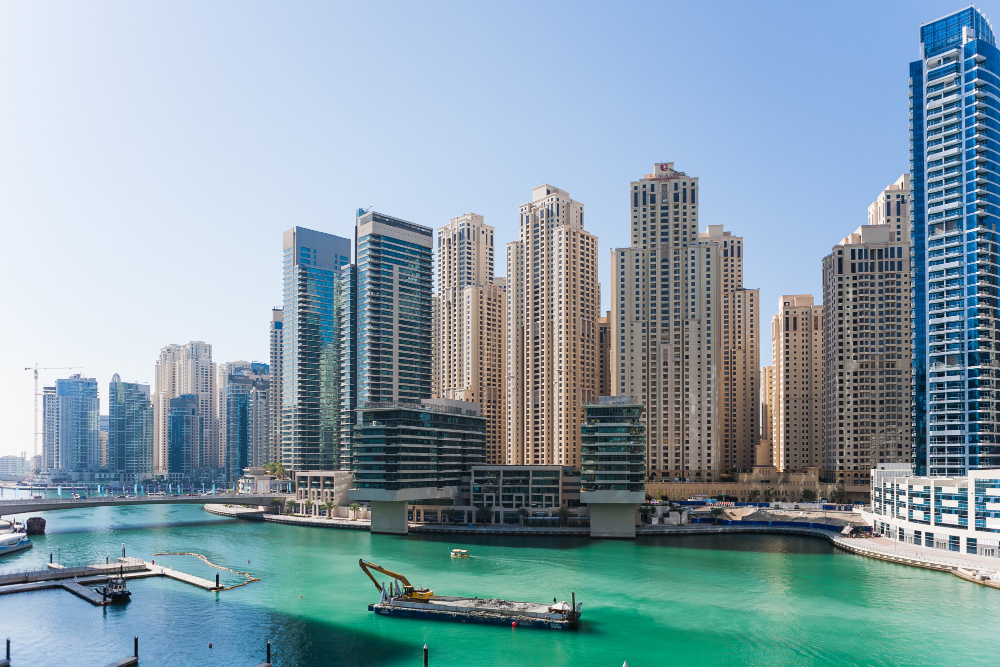Dubai shines as a beacon of growth and innovation in the Middle East, showcasing what can be achieved with vision, determination, and the intelligent use of technology. Adopting Building Information Modeling (BIM) services has contributed to its awe-inspiring architecture and cutting-edge infrastructure. BIM, a dynamic 3D model-based process, has transformed Dubai’s ambitious visions into reality, playing a pivotal role in the ever-evolving story of its skyline. Dubai has revolutionized its landscape through this technological marvel and set a benchmark for urban development worldwide. Join us as we delve into this captivating tale of growth and innovation.
BIM Services in Dubai
The adoption of BIM services in Dubai
The wave of BIM services in Dubai has added a novel dimension to the construction industry. Initiated in the early 2000s, adopting BIM services in Dubai has been a strategic move, shifting the paradigm from traditional 2D planning to a more efficient, cost-effective, and environmentally friendly 3D model-based process. This remarkable technology has facilitated better coordination among architects, engineers, and contractors, reducing errors and improving project timelines, leading to enhanced productivity and profitability within the industry.
The impact of BIM services on the construction industry in Dubai
The impact of BIM Services on the construction sector in Dubai has been transformative. Through its potent ability to visualize a building’s physical and functional characteristics before construction, BIM has redefined project execution strategies, mitigating risks and facilitating efficient resource utilization. This has precipitated a significant reduction in construction waste and an overall increase in project safety.
Case studies of successful BIM projects in Dubai
There are numerous instances where BIM has demonstrated its competence and value in Dubai’s construction industry. For example, the iconic Burj Khalifa, the world’s tallest building, was a project where BIM was pivotal in coordinating various design elements, structural analysis, and clash detection, making it a global case study for BIM implementation. Similarly, the Dubai Water Canal project, a 3.2km long waterway, utilized BIM for infrastructure and landscaping, helping to anticipate potential challenges and streamline the construction process. These examples underscore BIM services’ instrumental role in shaping Dubai’s remarkable skyline and bolstering its position as a global leader in innovative construction.
Dubai Municipality’s BIM Mandate
In 2015, the Dubai Municipality issued a mandate requiring BIM for architectural and MEP works for all buildings above 40 floors, for developments larger than 300,000 square meters, and for government projects. This strategic move aimed to bolster Dubai’s already progressive construction industry, ensure a consistent application of BIM services, and further streamline project execution. The impact of this mandate has been substantial, leading to a marked increase in project efficiency, cost-effectiveness, and sustainability within the industry. Compared with BIM mandates in other countries, Dubai stands out for its comprehensive application across large-scale projects and its forward-thinking inclusion of government projects, demonstrating Dubai’s firm commitment to innovation in construction technology.
Growth and Innovation in Dubai’s Construction Industry
- Dubai’s role as an epicenter of modern innovation: Dubai has positioned itself as a global leader in modern innovation, setting new benchmarks in the construction industry through the intelligent application of BIM services. This has resulted in a remarkable transformation of its skyline and urban infrastructure.
- The importance of innovation in Dubai’s construction industry: Innovation is a fundamental pillar in Dubai’s construction sector. It has improved professional coordination, mitigated project risks, enhanced resource utilization, and boosted industry productivity and profitability.
- Strategies for implementing innovation in Dubai’s construction industry: Key strategies include adopting advanced technologies like BIM, fostering collaborations among stakeholders, and implementing forward-thinking policies, like the Dubai Municipality’s BIM Mandate. These strategies have significantly contributed to the efficient execution of large-scale projects and overall industry growth.
Final Thoughts:
Dubia’s impressive growth and innovation in construction is a testament to the transformative power of technology. Through the intelligent use of Building Information Modeling (BIM) services, the city has redefined its skyline and set new global benchmarks for urban development. This adoption of BIM has increased efficiency, reduced risk, and boosted productivity, contributing to Dubai’s leadership in innovative construction.
BIM services will be more significant in Dubai’s construction industry. With technological advancements and a commitment to innovation, BIM will facilitate complex constructions, enhance sustainability efforts, and improve project execution strategies.
In conclusion, the importance of BIM services in Dubai’s construction industry cannot be overstated. It is a crucial pillar of the city’s innovative prowess and a shining example of how technology can revolutionize an entire industry. As we marvel at Dubai’s evolving skyline, we witness the power of BIM services, a testament to the city’s vision and determination to push construction boundaries.







